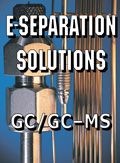Ask the Editor: Seven Preventive Maintenance Tips for Gas Chromatography Systems
John Hinshaw shows how to help your GC system live longer, perform better, and avoid problems.
An LCGC reader recently submitted the following question:
What are the basic elements of preventive maintenance for a GC system?
LCGC's "GC Connections"" target="_blank">"GC Connections" columnist John Hinshaw provides us with the following answer:
Preventive maintenance includes replacing consumable items and performing maintenance procedures on a regular basis. Important periodic maintenance includes the following items.
Autosampler syringe: Inspect when adding vials. Clean every 200 injections. Replace when contaminated or leaking.
Septa: Replace every 50-100 injections.
Inlet liners: Replace with every other septum, or when dirty (100-200 injections).
Columns: Evaluate performance every month. Replace when it falls below performance requirements, or every 6 months of use.
Ferrules: Replace whenever making a connection, new, or old.
Detector: Evaluate performance at least every month. Bake out or clean only when contaminated or noisy. Replace consumables as required. Perform electron-capture detector wipe test as required.
Gas filters (including split vent filter): Replace or regenerate every two to four tanks, or as indicating trap requires.
Electronic pressure control (EPC) pressure zero: Check every month.
These items represent the minimum. If your internal procedures require more frequent period maintenance, that's good.
Further Reading
If you are interested in guidelines in the care and maintenance of capillary GC columns, check out LCGC's December 2006 article by Mark Sinnott, Simon Jones, and Allen Vickers.
Questions?
LCGC technical editor Steve Brown will answer your technical questions. Each month, one question will be selected to appear in this space, so we welcome your submissions. Please send all questions to the attention of "Ask the Editor" at lcgcedit@lcgcmag.com. We look forward to hearing from you.
Altering Capillary Gas Chromatography Systems Using Silicon Pneumatic Microvalves
May 5th 2025Many multi-column gas chromatography systems use two-position multi-port switching valves, which can suffer from delays in valve switching. Shimadzu researchers aimed to create a new sampling and switching module for these systems.
New Study Reviews Chromatography Methods for Flavonoid Analysis
April 21st 2025Flavonoids are widely used metabolites that carry out various functions in different industries, such as food and cosmetics. Detecting, separating, and quantifying them in fruit species can be a complicated process.

.png&w=3840&q=75)

.png&w=3840&q=75)



.png&w=3840&q=75)



.png&w=3840&q=75)








